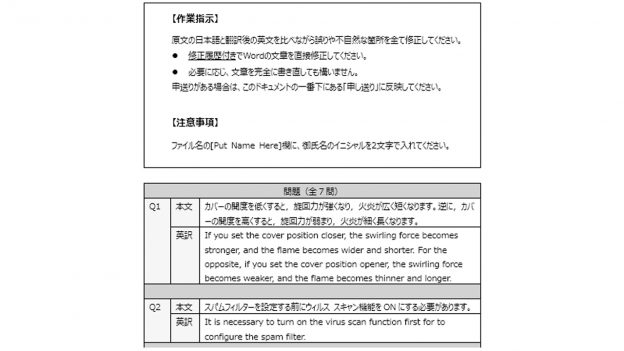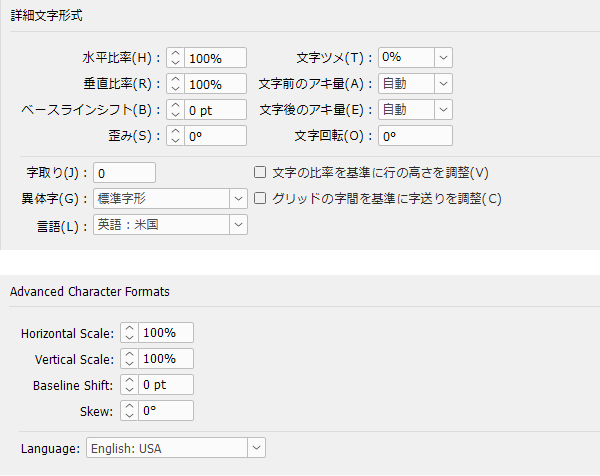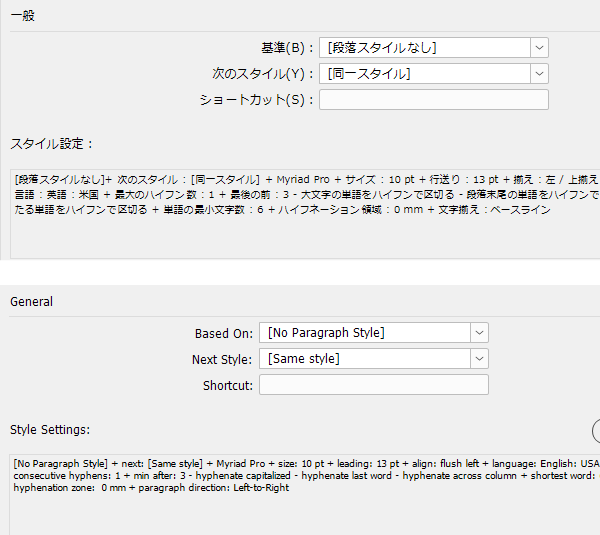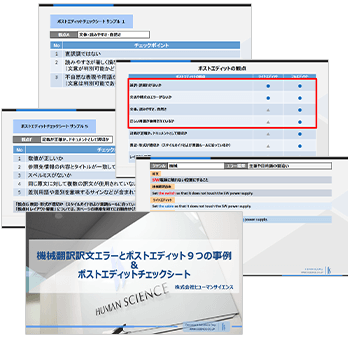At Human Science, we are committed to the development of external post-editors.
This time, we will introduce the training and quality management of Japanese-English translation post-editors at our company.
The development of post-editors is divided into the following four stages.
Table of Contents
2. Reviewer Training (Trial Tasks / Newsletter)
1. Reviewer Trial
To work as a post-editor in human science, you need to pass the reviewer trial. The trial will assess your skills in terms of whether you can appropriately correct errors and unnatural parts by comparing the original Japanese text with the translated English text.
Due to the high difficulty of the trial, the pass rate is below 10% (which is lower than the 15% pass rate for translator trials). A major reason for not passing is "excessive modifications that are not incorrect as translations but are tailored to personal preferences."
One of the important elements to becoming a reviewer is to avoid excessive corrections based on personal preferences. While corrections aimed at making the translation more natural and readable are acceptable, it is crucial to focus on correcting errors rather than making changes based on personal taste. Since the way of expressing things in English varies from person to person, respecting those differences is also an important point in the review process. Therefore, this aspect is given the highest priority in the evaluation of the reviewer trial.
The ability to control excessive corrections is a very important factor both in the review process of human translation and when performing light editing during post-editing.
Additionally, feedback will be sent to all participants who took this trial, regardless of whether they passed or failed.
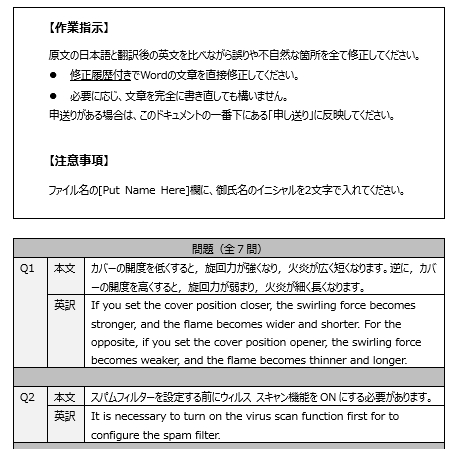
Trial Feedback
2. Reviewer Training (Trial Tasks / Newsletter)
Those who pass the reviewer trial will undergo our unique reviewer training. Basically, over a period of six months, one review task will be completed each month (there may also be requests for actual work during this period).
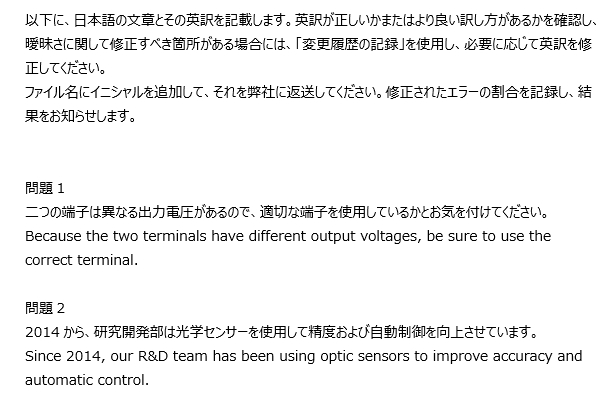
Reviewer Training
Candidates for post-editors will receive a reviewer newsletter from our company once or twice a month. The newsletter includes essential mindsets and knowledge necessary to become a Japanese-English translation reviewer, important rules in technical writing, common mistakes made by translators, and information about past review cases.
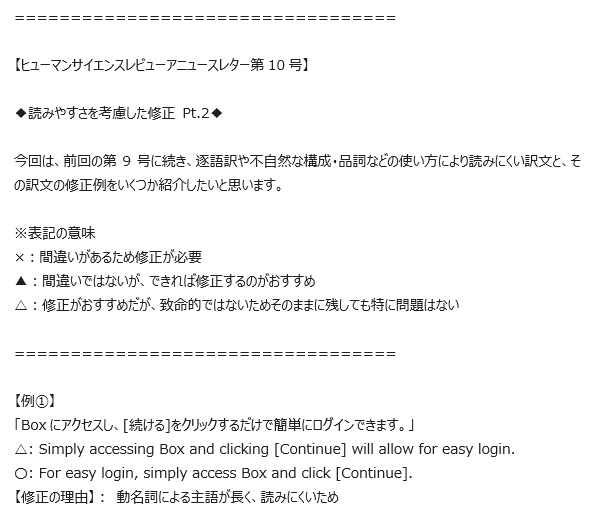
Reviewer Newsletter
After the completion of this 6-month training period, based on the results of the training, the internal review team will consider and officially determine the successful candidates. Those who are judged not to have met the passing line set by our company will continue to receive training.
3. Post-Editor Training (Trial Tasks and Case Studies)
Our post-editors are basically selected from those who have passed the above review trial and review training.
The selected individuals will handle a total of four post-editing tasks and receive evaluations and feedback from in-house reviewers. The tasks involve post-editing English translations generated from Japanese texts of approximately 1,000 characters. Depending on the provided post-editing checklist, they will perform either light editing or full editing.
In-house reviewers from Human Science will evaluate and provide feedback based on whether the candidates have followed the post-editing checklist during their post-editing work.
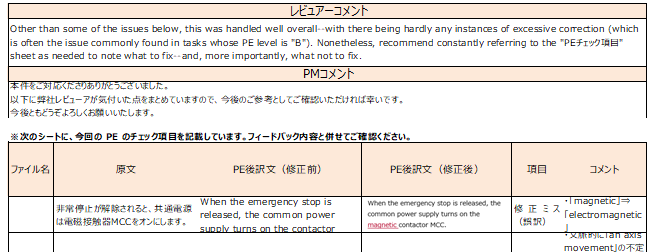
Trial Feedback
Once a month, we will select several case studies from actual projects that have undergone post-editing in the past and send them to the recipients for reference. The case studies will be divided into light edit and full edit, with the main purpose being to help understand how post-editing changes between these two levels.

Post-editing Case Studies
Once all training is complete, you will finally be asked to perform post-editing work in the actual setting.
4. Screening and Spot Checking of Actual Post-Editing Work
At this point, we will finally request a real project as a formal post-editor. Initially, before delivery to the client, an internal reviewer will review everything and check all post-editing work. Necessary corrections will be made, and later, feedback on the corrected parts will be provided to the post-editor.
After gaining experience with multiple projects and achieving a certain level of quality stability, the subsequent process will involve only spot checks and QA checks by internal reviewers on the submitted work.
Details of the evaluation and feedback for post-editing work are recorded in our database and will be utilized for future selection of post-editors.

Feedback
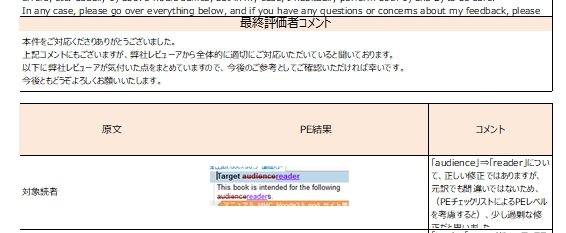
Feedback

Post-Editor Evaluation Database
Summary
Behind all the processes introduced this time, there exists a "feedback culture" that our company values. We are committed to providing regular feedback to those with capability and a growth mindset, and to offering opportunities for further growth and broad engagement.

